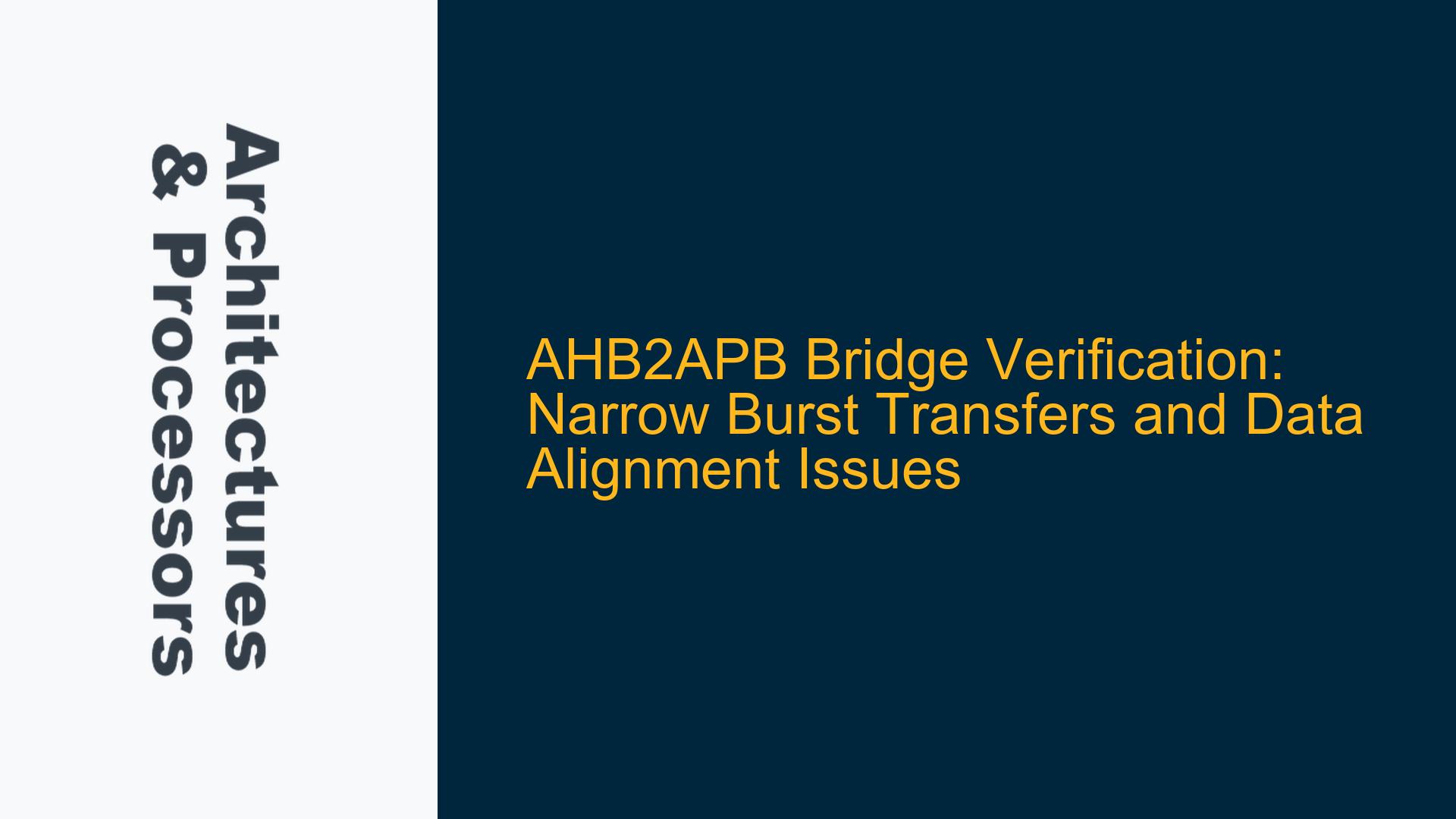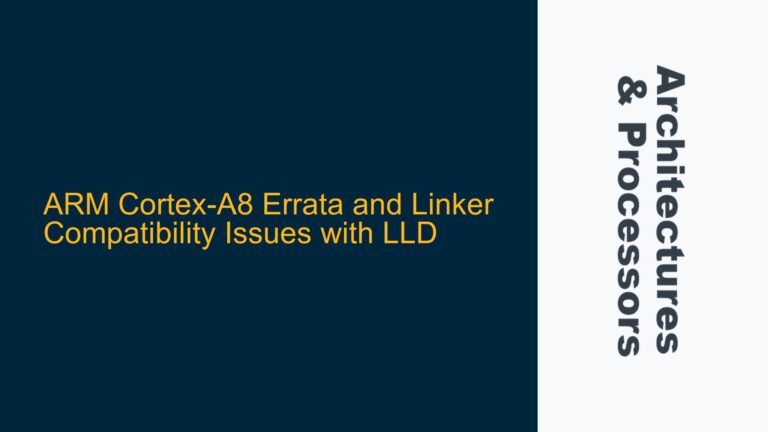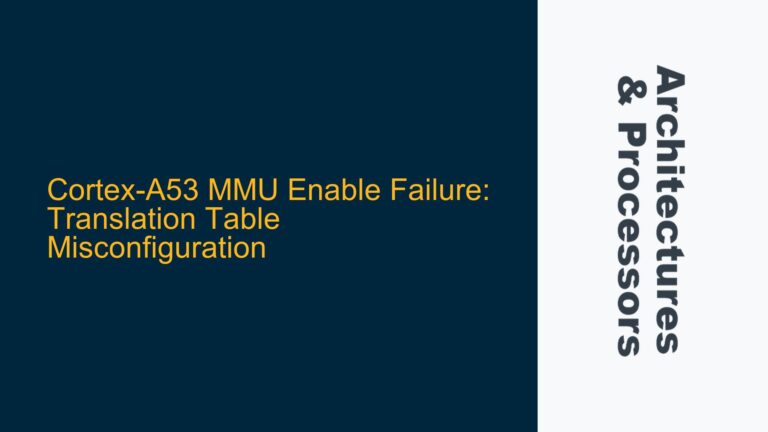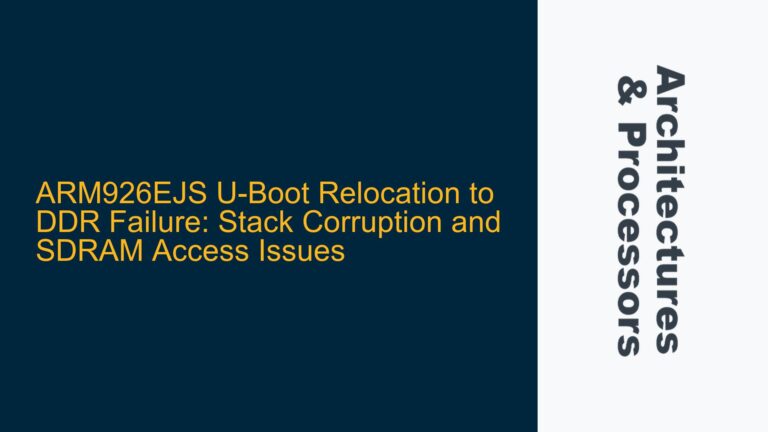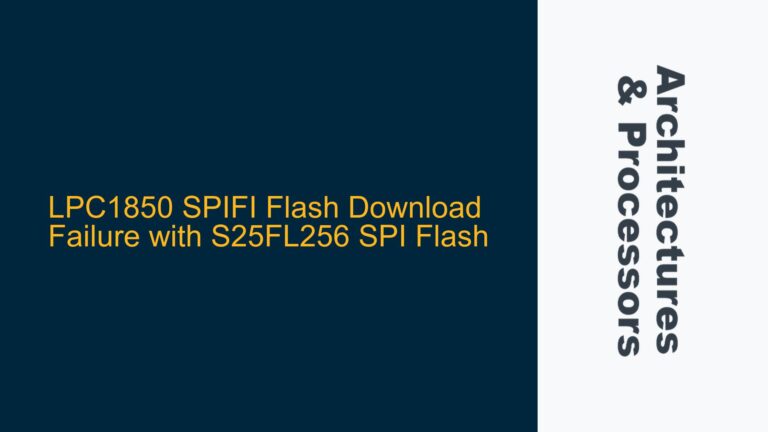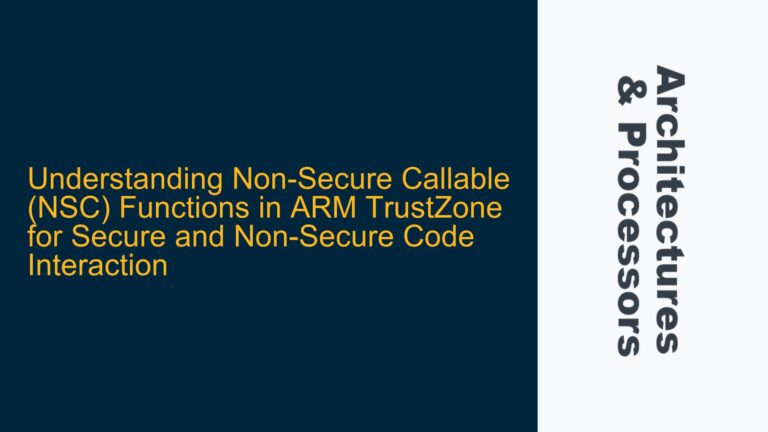AHB-to-APB Bridge Narrow Burst Transfer Behavior with HSIZE=0
The core issue revolves around the behavior of an AHB-to-APB bridge during narrow burst transfers, specifically when the AHB master initiates a read burst incremental transfer with HSIZE=0 (byte transfer) to an APB slave that is word-addressable. The AHB master expects byte-level granularity in its transactions, while the APB slave operates at a word-level granularity, leading to potential misalignment and unexpected data responses. The AHB master sends a burst of four byte-sized read requests, incrementing the address by one for each transfer (HADDR=0x00, 0x01, 0x02, 0x03). However, the APB slave, being word-addressable, returns a full 32-bit word for each request, regardless of the byte-level addressing. This discrepancy raises questions about the expected HRDATA values on the AHB master side and whether narrow burst transfers are appropriate for APB slaves.
The AHB master observes the following responses:
- HADDR=0x00, HRDATA=0x0A0B0C0D
- HADDR=0x01, HRDATA=0x090A0B0C
- HADDR=0x02, HRDATA=0x08090A0B
- HADDR=0x03, HRDATA=0x0708090A
The confusion arises because the APB slave is returning 32-bit words for each byte-level request, and the AHB master is unsure how to interpret these responses. Additionally, the alignment of the address on the APB side (PADDR) is critical, as misalignment can lead to unpredictable behavior. The APB bridge must ensure that the PADDR is aligned to the word boundary (i.e., PADDR[1:0] = 2’b00) to correctly address the word-addressable APB slave.
Misaligned PADDR and APB Slave Word Addressability Constraints
The root cause of the issue lies in the misalignment between the AHB master’s byte-level addressing and the APB slave’s word-level addressability. The AHB protocol allows for narrow burst transfers, where the master can request data transfers smaller than the bus width (e.g., byte transfers on a 32-bit bus). However, the APB protocol is designed for simpler, lower-bandwidth peripherals and typically operates at the word level. This fundamental mismatch in addressing granularity leads to several potential issues:
-
Misaligned PADDR: When the AHB master sends byte-level addresses (e.g., HADDR=0x00, 0x01, 0x02, 0x03), the AHB-to-APB bridge must translate these addresses to the APB domain. If the bridge does not align the PADDR to the word boundary (i.e., PADDR[1:0] = 2’b00), the APB slave may interpret the address incorrectly, leading to unpredictable results. In this case, the APB slave is likely receiving PADDR=0x00, 0x01, 0x02, 0x03, which are not aligned to the word boundary.
-
APB Slave Data Return: The APB slave, being word-addressable, returns a full 32-bit word for each request, regardless of the byte-level addressing. This means that for each byte-level request from the AHB master, the APB slave returns a 32-bit word. The AHB master must then extract the relevant byte from the returned word based on the address and transfer size.
-
Endianness Considerations: The interpretation of the returned data also depends on the endianness of the system. In a little-endian system, the least significant byte (LSB) of the word corresponds to the lowest address, while in a big-endian system, the most significant byte (MSB) corresponds to the lowest address. The AHB master must correctly interpret the returned data based on the system’s endianness.
-
Narrow Burst Transfers to APB Slaves: While the AHB protocol supports narrow burst transfers, it is generally not recommended to use them with APB slaves due to the inherent mismatch in addressing granularity. APB slaves are typically designed for simple, word-level transactions, and narrow burst transfers can complicate the design of the AHB-to-APB bridge and lead to inefficiencies.
Implementing Proper Address Alignment and Data Extraction in AHB-to-APB Bridge
To resolve the issue, the AHB-to-APB bridge must ensure proper address alignment and data extraction. The following steps outline the necessary modifications and considerations:
-
Address Alignment: The AHB-to-APB bridge must align the PADDR to the word boundary before sending the request to the APB slave. This means that for any byte-level address from the AHB master, the bridge should set PADDR[1:0] = 2’b00. For example, if the AHB master sends HADDR=0x00, 0x01, 0x02, 0x03, the bridge should translate these addresses to PADDR=0x00, 0x00, 0x00, 0x00, respectively. This ensures that the APB slave always receives a word-aligned address.
-
Data Extraction: The bridge must extract the relevant byte from the 32-bit word returned by the APB slave based on the original HADDR and HSIZE. For example, if the AHB master requests a byte from HADDR=0x01, the bridge should extract the second byte (bits [15:8]) from the 32-bit word returned by the APB slave. The extracted byte should then be placed in the correct byte lane of the HRDATA signal on the AHB side.
-
Endianness Handling: The bridge must account for the system’s endianness when extracting the data. In a little-endian system, the byte at the lowest address corresponds to the least significant byte (LSB) of the word, while in a big-endian system, it corresponds to the most significant byte (MSB). The bridge must ensure that the extracted byte is placed in the correct byte lane of the HRDATA signal based on the system’s endianness.
-
Narrow Burst Transfer Handling: While narrow burst transfers are supported by the AHB protocol, they should be used with caution when interfacing with APB slaves. If narrow burst transfers are necessary, the bridge must handle each byte-level request individually, ensuring proper address alignment and data extraction for each transfer. However, it is generally recommended to avoid narrow burst transfers to APB slaves and instead use word-level transfers to simplify the design and improve efficiency.
-
Verification Strategy: To verify the correct behavior of the AHB-to-APB bridge, the following test cases should be considered:
- Byte-level read transfers with different HADDR values: Verify that the bridge correctly aligns the PADDR and extracts the appropriate byte from the returned word.
- Endianness verification: Verify that the bridge correctly handles both little-endian and big-endian systems.
- Narrow burst transfer verification: Verify that the bridge correctly handles narrow burst transfers, ensuring proper address alignment and data extraction for each transfer in the burst.
- Corner cases: Verify the bridge’s behavior in corner cases, such as when the HADDR is already word-aligned or when the burst length exceeds the APB slave’s capabilities.
By implementing these modifications and verification strategies, the AHB-to-APB bridge can correctly handle narrow burst transfers and ensure proper data alignment and extraction, resolving the issues observed in the current design.
